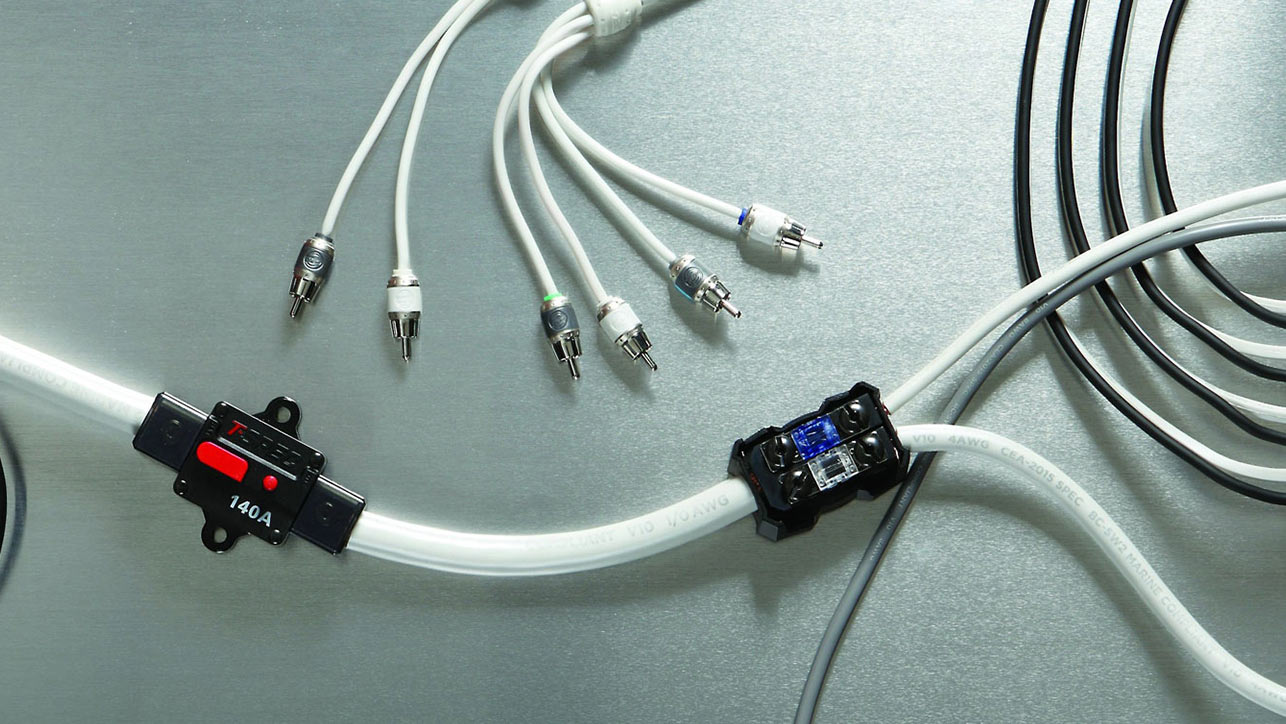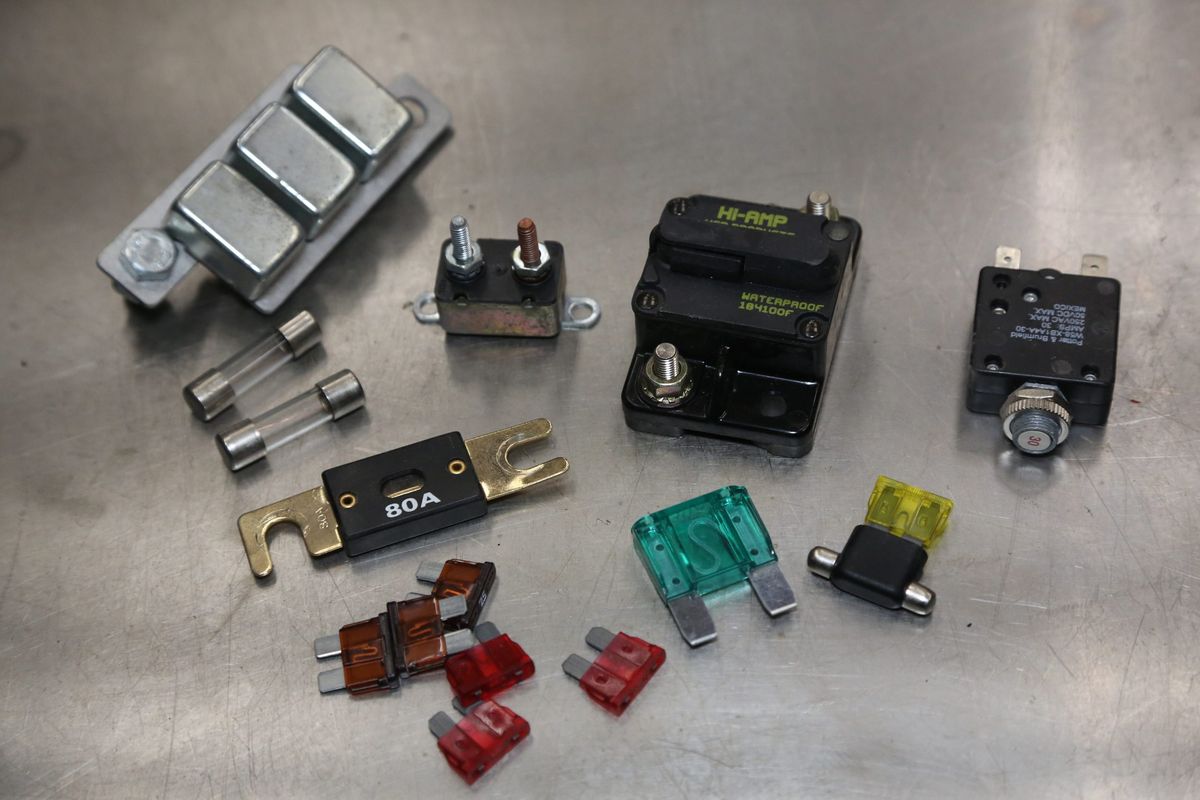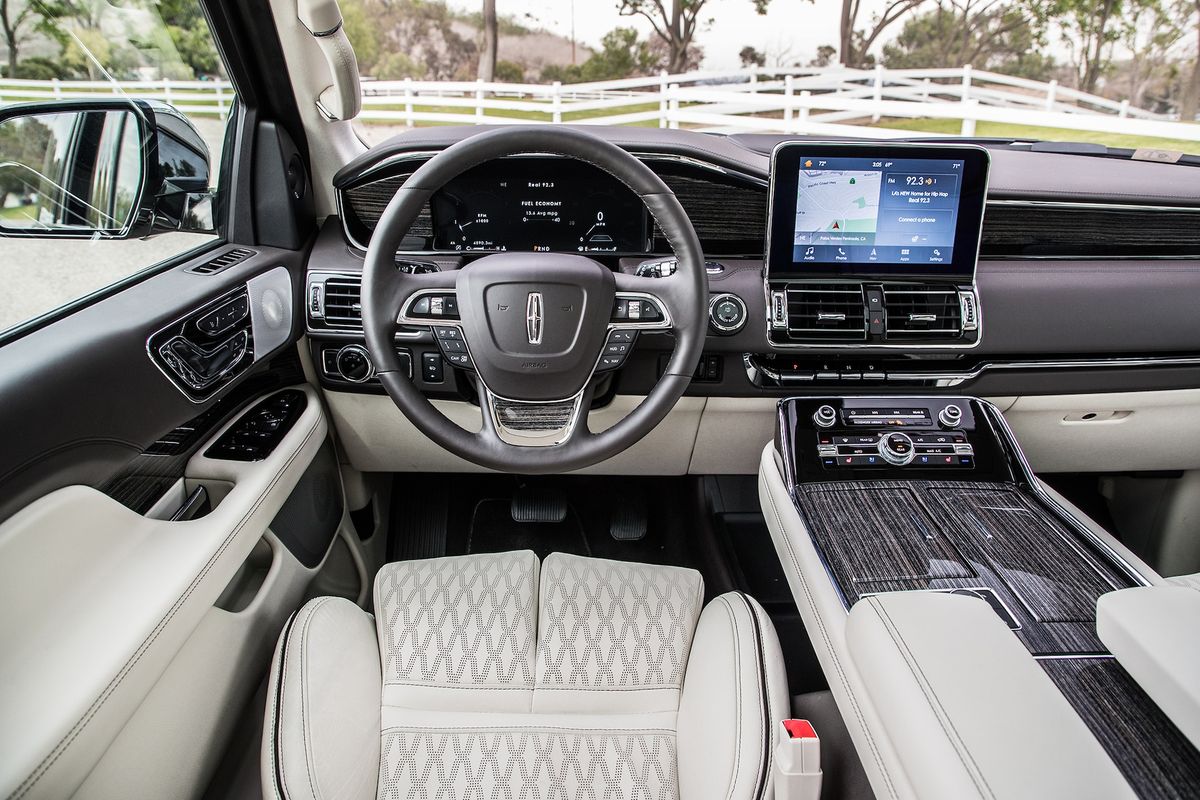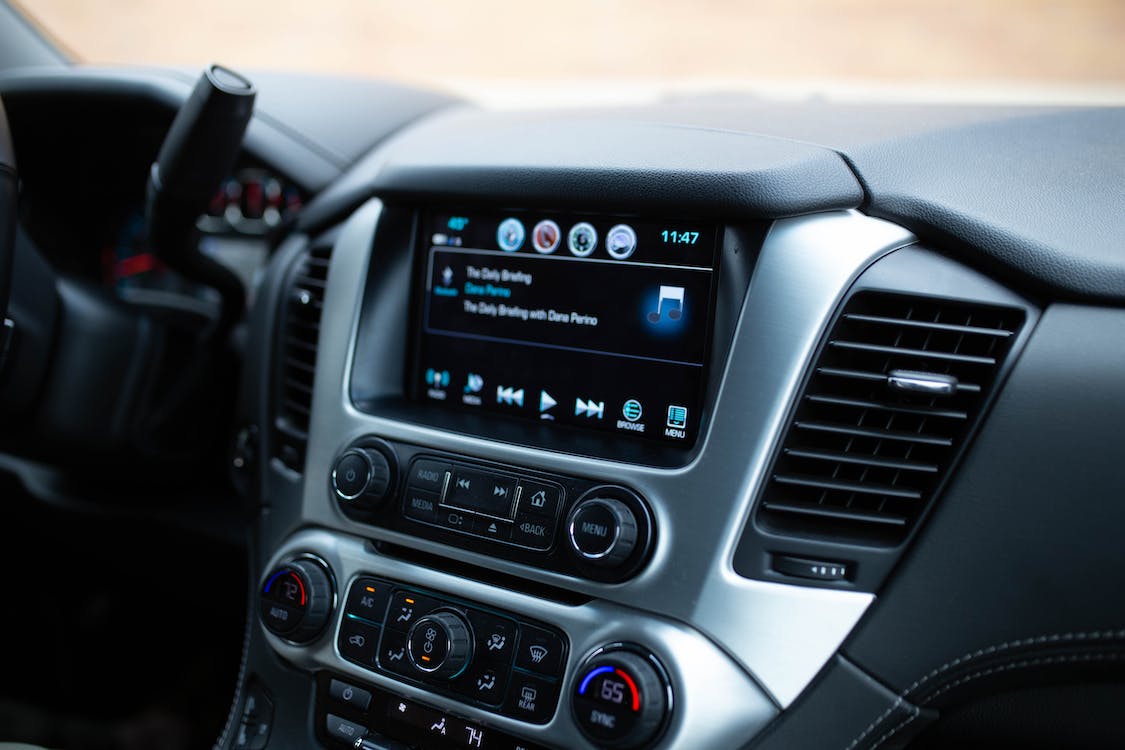Home>Production & Technology>Stereo>What Is Canbus In Car Stereo
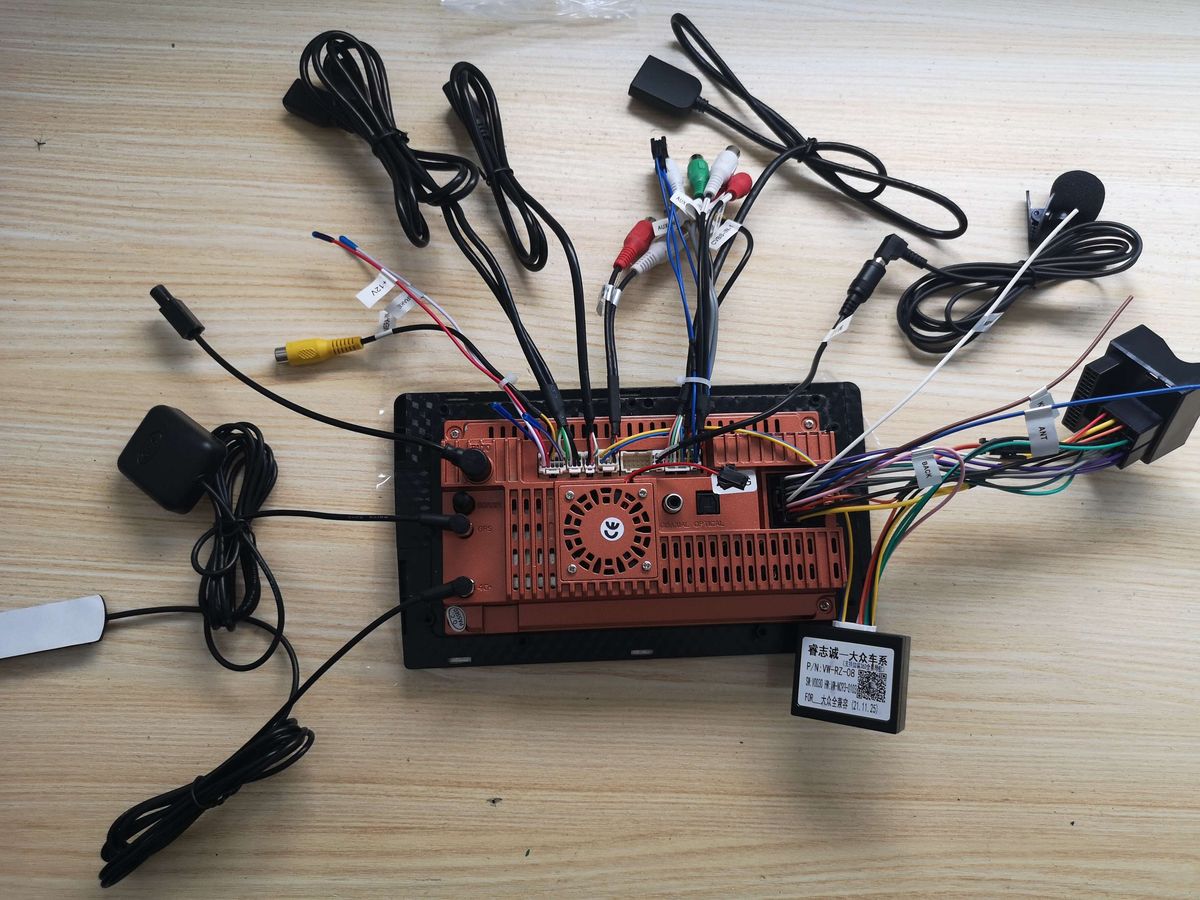

Stereo
What Is Canbus In Car Stereo
Modified: January 22, 2024
Discover what Canbus is and how it enhances your car stereo system. Explore the benefits and features of Canbus technology for a superior stereo experience.
(Many of the links in this article redirect to a specific reviewed product. Your purchase of these products through affiliate links helps to generate commission for AudioLover.com, at no extra cost. Learn more)
Table of Contents
- Introduction
- Understanding Canbus Technology
- Canbus in Car Stereo Systems
- Benefits of Canbus Integration
- Challenges of Canbus Integration
- Popular Canbus-Compatible Car Stereo Brands
- Installation Process of Canbus-Enabled Car Stereos
- Troubleshooting Canbus Connectivity Issues
- Future Trends in Canbus Integration for Car Stereos
- Conclusion
Introduction
Welcome to the fascinating world of car stereos! In today’s digital age, car entertainment systems have evolved significantly, delivering a remarkable audio and visual experience for drivers and passengers alike. One notable technology that has significantly improved the integration and functionality of car stereos is Canbus.
Canbus, short for Controller Area Network Bus, is a communication protocol system originally developed by Robert Bosch GmbH in the 1980s for use in automobiles. It is a network of interconnected electronic systems within a vehicle that allows for the seamless transmission of data between various components, including the car stereo.
Gone are the days when car stereos solely played audio CDs or FM radio. Modern car stereos have become multimedia powerhouses, equipped with features like touchscreen interfaces, Bluetooth connectivity, GPS navigation systems, and support for various media formats. However, integrating these complex systems seamlessly with a vehicle’s existing electronic infrastructure can be quite challenging.
This is where Canbus technology steps in. By utilizing the Canbus network, car stereos can communicate directly with other vehicle systems such as the steering wheel controls, dashboard displays, and even the car’s diagnostic system. Canbus integration enables a range of advanced features and functionalities that enhance the user experience while driving.
In this article, we will delve into the world of Canbus integration in car stereo systems. We will explore the benefits it offers, the challenges it presents, popular Canbus-compatible car stereo brands, the installation process of Canbus-enabled car stereos, troubleshooting common connectivity issues, and even touch upon future trends in Canbus integration for car stereos.
So fasten your seatbelts and get ready to embark on a journey of discovery as we unravel the mysteries of Canbus technology and its role in enhancing the performance and functionality of car stereo systems.
Understanding Canbus Technology
Before diving into the specifics of Canbus integration in car stereo systems, it is essential to have a basic understanding of Canbus technology itself. Canbus is a communication protocol that allows electronic devices within a vehicle to exchange data and control signals efficiently and reliably.
At its core, Canbus is a two-wire network that connects various electronic control units (ECUs) in a vehicle, including those responsible for engine management, ABS (Anti-lock Braking System), airbags, and of course, the car stereo system. The network is based on a differential voltage signaling scheme, where logical signals are represented by voltage differences between the two wires, known as CAN High and CAN Low.
The Canbus protocol operates on a principle of message-based communication, where data packets, known as “frames,” are transmitted and received by devices on the network. Each frame contains a unique identifier that allows receiving devices to determine the message’s source and intended destination. This identifier also helps prioritize messages based on their importance and criticality.
One of the key advantages of Canbus technology is its ability to handle multiple devices simultaneously. Each ECU on the Canbus network has a unique address, allowing it to send and receive specific messages assigned to it. This enables efficient and seamless communication between different systems within the vehicle, enhancing overall performance and functionality.
Another crucial aspect of Canbus technology is its fault-tolerant design. The network utilizes a powerful error detection and error correction mechanism, allowing for the identification and elimination of errors during data transmission. This ensures that system failures or malfunctions in one ECU do not disrupt communication or affect the performance of other devices on the network.
Furthermore, Canbus networks are highly scalable, capable of accommodating additional devices and functionalities as vehicle technology advances. This scalability makes it a future-proof solution for integrating new features and technologies into car stereo systems without the need for significant hardware or software upgrades.
Overall, Canbus technology plays a vital role in enabling seamless communication and integration between various electronic components within a vehicle. In the context of car stereo systems, Canbus integration offers a wide range of benefits and features that enhance the overall user experience and simplify controls while driving.
Canbus in Car Stereo Systems
Now that we have a good understanding of Canbus technology, let’s explore how it is integrated into car stereo systems and the benefits it brings to the table. Canbus integration in car stereos allows for seamless communication and control between the stereo unit and other vehicle systems, resulting in enhanced functionality and convenience.
One of the primary advantages of Canbus integration is the ability to retain and utilize existing vehicle controls. Canbus-enabled car stereos can communicate with the steering wheel controls, allowing drivers to adjust the volume, change tracks, and even answer phone calls without taking their hands off the wheel. This integration provides a safer and more convenient driving experience, as drivers can keep their focus on the road while still enjoying full control over their car stereo system.
In addition to steering wheel controls, Canbus integration also enables communication with the vehicle’s dashboard display. This means that vital information, such as radio station frequencies, track titles, and navigation instructions, can be displayed directly on the car’s dashboard screen. This integration ensures that drivers have easy access to crucial information without the need to glance at the stereo unit itself.
Furthermore, Canbus integration allows for seamless integration with the car’s diagnostic system. This means that car stereos can retrieve and display important vehicle information such as fuel consumption, engine temperature, and battery voltage. It also allows for the display of warning messages and alerts related to vehicle maintenance or system malfunctions. This integration not only enhances the overall user experience but also helps in identifying and resolving potential issues with the vehicle.
Canbus integration also simplifies the installation process of car stereo systems. As the stereo unit can communicate directly with the vehicle’s existing wiring harness, there is no need for additional complex wiring or adapter harnesses. This makes the installation process faster, easier, and less prone to errors. Additionally, Canbus integration ensures that all factory features and systems, such as the microphone for hands-free calling or the amplifier for audio output, continue to function seamlessly with the new car stereo.
Overall, Canbus integration in car stereo systems revolutionizes the way we interact with and control our in-car entertainment. It enhances convenience, safety, and functionality by allowing for seamless communication between the stereo unit and various vehicle systems, such as steering wheel controls, dashboard displays, and the diagnostic system.
Benefits of Canbus Integration
Canbus integration in car stereo systems offers a multitude of benefits that greatly enhance the overall user experience. Let’s explore some of the key advantages of incorporating Canbus technology into car stereos:
- Seamless Control Integration: Canbus integration allows car stereos to seamlessly integrate with the existing controls in the vehicle, such as steering wheel buttons. This means that drivers can easily adjust volume, change tracks, and access various functions without taking their hands off the wheel, enhancing safety and convenience.
- Dashboard Display Integration: Canbus-enabled car stereos can transmit essential information, such as radio station frequencies, track titles, and navigation instructions, to the vehicle’s dashboard display. This integration ensures that drivers have easy access to crucial information without the need to glance at the stereo unit, improving readability and minimizing distractions.
- Vehicle Information and Diagnostics: Canbus integration allows car stereos to retrieve and display important vehicle information, such as fuel consumption, engine temperature, and battery voltage. It also enables the display of warning messages and alerts related to vehicle maintenance or system malfunctions. This integration helps drivers monitor their vehicles’ health and take necessary actions promptly.
- Improved Installation Process: Canbus integration simplifies the installation process of car stereo systems. With direct communication between the stereo unit and the vehicle’s existing wiring harness, there is no need for additional complex wiring or adapter harnesses. This streamlines the installation process, reduces the chance of errors, and ensures compatibility with the vehicle’s factory features and systems.
- Enhanced User Experience: Canbus integration enhances the overall user experience by providing seamless control, access to important information, and simplified installation. It allows drivers to stay focused on the road while enjoying full control over the car stereo system, ensuring a safer and more enjoyable driving experience.
These benefits highlight the importance of Canbus integration in car stereo systems. By leveraging the power of Canbus technology, car stereos can seamlessly integrate with various vehicle controls and systems, facilitating convenient and intuitive operation while enhancing safety and functionality.
Challenges of Canbus Integration
While Canbus integration offers numerous benefits, it also presents certain challenges that need to be addressed. Let’s explore some of the common challenges involved in integrating Canbus technology into car stereo systems:
- Varying Canbus Protocols: Different car manufacturers may utilize different versions of the Canbus protocol or may have their own proprietary protocols. This can create compatibility issues when trying to integrate a universal Canbus-enabled car stereo into a specific vehicle. Manufacturers often implement customized wiring and communication protocols, requiring careful adaptation and compatibility testing for successful integration.
- Complexity: Canbus networks can be complex, consisting of multiple electronic control units (ECUs) communicating with each other. Understanding the intricacies of the network and the specific messages exchanged between different ECUs can present a challenge. Proper mapping of Canbus commands and functionalities to the car stereo system requires in-depth knowledge of both the stereo unit and the vehicle’s Canbus network.
- Data Transmission Speed: The Canbus protocol is designed for reliable and robust data transmission, rather than high-speed communication. This limitation can impact the responsiveness and speed of certain features in the car stereo system, such as navigating through menus or accessing music libraries. Engineers and developers need to optimize the data transmission and processing to ensure smooth and efficient operation.
- Interference and Signal Quality: In certain situations, electromagnetic interference (EMI) or signal degradation can occur within the Canbus network. This can lead to data errors or disruptions in communication between the car stereo and other vehicle systems. Thorough testing and shielding measures may be required to mitigate such interference and ensure the reliability of Canbus integration.
- Compatibility with Aftermarket Components: Canbus integration can be particularly challenging when installing aftermarket components or accessories, such as amplifiers or additional display units. These components may not be natively compatible with the vehicle’s Canbus system, necessitating the use of additional adapters or modifications to establish proper communication and functionality.
Addressing these challenges requires expertise in both Canbus technology and car stereo systems. Car stereo manufacturers and installers need to conduct extensive research and testing to ensure seamless integration, compatibility, and optimal performance while overcoming these obstacles.
Despite these challenges, the benefits of Canbus integration outweigh the complexities involved. By leveraging the capabilities of Canbus technology, car stereo systems can offer enhanced functionality, improved user experience, and seamless integration with a vehicle’s existing control and information systems.
Popular Canbus-Compatible Car Stereo Brands
As Canbus integration becomes more prevalent in car stereo systems, several reputable brands have emerged in the market, offering Canbus-compatible options. These brands prioritize seamless integration, functionality, and user experience. Let’s explore some of the popular Canbus-compatible car stereo brands:
- Pioneer: Pioneer is a renowned name in the car audio industry, known for its high-quality products and innovative features. Pioneer offers a range of Canbus-enabled car stereos that seamlessly integrate with a variety of vehicle systems, including steering wheel controls, dashboard displays, and vehicle diagnostics. Their stereo units are known for their intuitive interfaces, excellent sound quality, and extensive compatibility.
- Alpine: Alpine is another leading brand that offers Canbus-compatible car stereo systems. Known for their sleek designs and cutting-edge technology, Alpine stereo units seamlessly integrate with the vehicle’s Canbus network, providing full control and access to essential information. Alpine car stereos are recognized for their superior sound quality and advanced features, such as Apple CarPlay and Android Auto compatibility.
- Sony: Sony is a trusted brand in the electronics industry, and their car stereo systems are no exception. Sony offers Canbus-enabled car stereos that provide seamless integration with the vehicle’s existing controls and displays. Sony stereos are known for their user-friendly interfaces, robust connectivity options, and superior audio performance, making them a popular choice among car audio enthusiasts.
- Kenwood: Kenwood is a well-established brand known for its high-quality audio products, including car stereos. Kenwood offers Canbus-compatible car stereo systems that seamlessly integrate with various vehicle systems, ensuring a seamless user experience. Kenwood stereo units are praised for their advanced features, customizable interfaces, and excellent audio performance.
- JVC: JVC is a reputable brand that produces a wide range of car audio systems, including Canbus-compatible stereo units. JVC car stereos offer seamless integration with the vehicle’s control systems, providing convenience and ease of use. JVC stereo systems are known for their sleek designs, versatile connectivity options, and impressive sound quality.
It is important to note that Canbus compatibility may vary depending on the specific model and features offered by each brand. When choosing a Canbus-compatible car stereo, it is recommended to consult with a knowledgeable car audio professional or refer to the manufacturer’s specifications to ensure compatibility with your vehicle’s Canbus system.
By opting for a reputable and Canbus-compatible car stereo brand, you can enjoy the benefits of seamless integration, enhanced functionality, and a superior audio experience in your vehicle.
Installation Process of Canbus-Enabled Car Stereos
The installation process of canbus-enabled car stereos differs slightly from traditional car audio installations due to the integration of the Canbus technology. While the specific steps may vary depending on the vehicle make and model, here is a general overview of the installation process:
- Gather the necessary tools: Before starting the installation, make sure you have all the required tools, including a set of screwdrivers, wire strippers, crimping tool, electrical tape, and a trim removal tool if needed.
- Disconnect the car battery: Begin by disconnecting the car battery’s negative terminal to prevent any electrical mishaps during the installation process.
- Remove the factory stereo: Carefully remove the trim around the factory stereo using a trim removal tool, then unscrew and disconnect the wiring harnesses and antenna connection. Pull out the factory stereo unit and set it aside.
- Connect the wiring harness: Connect the wiring harness of the canbus-enabled car stereo to the vehicle’s wiring harness. This ensures proper electrical connections and compatibility with the Canbus system.
- Mount the car stereo: Slide the canbus-enabled car stereo into the dash opening, ensuring a secure fit. Use the necessary mounting brackets and screws provided with the car stereo to secure it in place.
- Connect the Canbus adapter: If required, connect the Canbus adapter to the car stereo’s wiring harness. This adapter ensures seamless communication between the car stereo and the vehicle’s Canbus network.
- Reconnect the wiring harnesses: Connect the wiring harnesses from the car stereo to the corresponding connectors in the vehicle. Ensure a secure and proper connection for optimal functionality.
- Reconnect the car battery: Once all the wiring connections are made, reconnect the car battery’s negative terminal, carefully ensuring a solid electrical connection.
- Test the car stereo: Turn on the car and test the functionality of the canbus-enabled car stereo. Verify that all controls, displays, and features are working correctly. Make any necessary adjustments or configurations as required.
- Secure and replace trim: Once everything is tested and functioning correctly, securely reattach any trim pieces that were removed during the installation process.
- Enjoy your upgraded car stereo: With the canbus-enabled car stereo successfully installed, you can now enjoy the enhanced functionality and seamless integration it brings to your vehicle.
Please note that the installation steps outlined here provide a general overview. It is crucial to consult the specific instructions provided by the car stereo manufacturer and consider seeking professional assistance or guidance if needed, particularly if you are unfamiliar with car audio installations or dealing with complex Canbus systems.
By following these steps and ensuring a proper installation, you can enjoy the benefits of a canbus-enabled car stereo and fully integrate it into your vehicle’s existing control systems.
Troubleshooting Canbus Connectivity Issues
While Canbus integration offers numerous benefits, it is not uncommon to encounter connectivity issues during the installation or use of canbus-enabled car stereos. Here are some common troubleshooting steps to help address Canbus connectivity issues:
- Check wiring connections: Ensure that all wiring connections, including the Canbus adapter and wiring harnesses, are securely and properly connected. Loose or faulty connections can disrupt communication between the car stereo and the Canbus network.
- Verify compatibility: Confirm that the canbus-enabled car stereo is compatible with your vehicle’s specific Canbus system. Different vehicle manufacturers may use different versions or configurations of the Canbus protocol, and compatibility is essential for seamless integration.
- Update firmware/software: Check for any firmware or software updates for the car stereo. Manufacturers often release updates to address compatibility issues and improve Canbus integration. Updating the firmware/software can help resolve connectivity issues and ensure optimal performance.
- Reset the car stereo: Try performing a factory reset on the car stereo. This can help resolve any software glitches or conflicts that might be causing Canbus connectivity issues. Refer to the manufacturer’s instructions for the specific procedure to reset the car stereo.
- Inspect Canbus wiring: Inspect the Canbus wiring for any signs of damage, such as cuts, frayed wires, or loose connections. Faulty wiring can cause disruptions in Canbus communication. If any issues are found, repair or replace the wiring as necessary.
- Consult professional assistance: If troubleshooting steps do not resolve the Canbus connectivity issues, it might be beneficial to seek professional assistance. Car audio installers or technicians with expertise in Canbus systems can diagnose the problem and provide suitable solutions.
- Consider aftermarket Canbus adapters: If compatibility issues persist, it may be necessary to use aftermarket Canbus adapters or modules specifically designed for your vehicle. These adapters can help overcome compatibility challenges and ensure proper Canbus integration.
- Contact manufacturer support: If all else fails, reach out to the car stereo manufacturer’s technical support team. They can provide further assistance, troubleshoot the specific issues you are experiencing, and offer guidance on resolving Canbus connectivity problems.
It is important to approach troubleshooting Canbus connectivity issues with patience and diligence. Remember to refer to the car stereo’s user manual and follow the manufacturer’s recommended procedures, particularly when it comes to firmware updates or performing a factory reset.
By systematically addressing and resolving Canbus connectivity issues, you can ensure seamless integration, optimal functionality, and an enhanced user experience with your canbus-enabled car stereo system.
Future Trends in Canbus Integration for Car Stereos
As technology continues to evolve at a rapid pace, the future of Canbus integration in car stereo systems holds exciting possibilities. Here are some notable trends that we can expect to see in the coming years:
- Expanded Canbus Compatibility: As automotive manufacturers continue to adopt Canbus technology as a standard, we can anticipate broader compatibility between car stereo systems and various vehicle makes and models. This will allow for seamless integration and enhanced functionality across a wider range of vehicles.
- Advanced Voice Control: Voice control technologies are becoming more sophisticated and accurate. Car stereo systems of the future may integrate advanced voice recognition capabilities, allowing users to control various functions simply by speaking commands. This will further enhance safety and convenience while keeping drivers focused on the road.
- Enhanced Vehicle Data Integration: Canbus integration will continue to advance in terms of data exchange between the car stereo system and the vehicle’s sensors and control units. Car stereos will be able to access and display even more detailed vehicle information, including real-time performance data, maintenance notifications, and advanced diagnostics.
- Seamless Smartphone Integration: With the increasing reliance on smartphones for music streaming, navigation, and communication, car stereo systems will prioritize seamless integration with mobile devices. Canbus technology will play a key role in enabling enhanced connectivity with smartphones, allowing for easy access to apps, cloud-based services, and personalized settings.
- Intelligent Integration with Advanced Driver Assistance Systems (ADAS): The future of Canbus integration will involve closer collaboration with ADAS technologies. Car stereo systems may provide visual and audible notifications for lane departure warnings, blind spot detection, and other ADAS functionalities. This integration will further enhance driver safety and convenience.
- Expanded Multimedia Integration: Canbus integration will continue to improve multimedia capabilities within car stereo systems. This includes integrating streaming services, social media apps, and voice/video calls directly into the stereo interface, providing a fully immersive and connected multimedia experience.
- Personalized User Profiles: Car stereo systems of the future may enable personalized user profiles that can be customized to individual preferences. These profiles will allow users to save their unique presets, such as preferred audio settings, radio stations, and navigation preferences, creating a more personalized and tailored driving experience.
These future trends in Canbus integration for car stereo systems will enhance user experience, safety, and convenience while keeping up with the ever-evolving world of technology. As vehicles become more connected and intelligent, Canbus integration will play a vital role in seamlessly integrating car stereo systems with the complex networks of modern vehicles.
Conclusion
The integration of Canbus technology in car stereo systems has revolutionized the way we experience in-car entertainment and functionality. Canbus integration enables car stereos to seamlessly communicate with various vehicle systems, including steering wheel controls, dashboard displays, and the diagnostic system, delivering a host of benefits to drivers and passengers.
With Canbus integration, drivers can enjoy convenient and safe control over their car stereo systems, with features like steering wheel control compatibility and dashboard display integration. Access to vehicle information and diagnostics enhances awareness and allows for proactive maintenance. The simplified installation process and compatibility with aftermarket components make upgrading to a canbus-enabled car stereo a seamless experience.
While challenges like varying Canbus protocols and complex networks exist, manufacturers and installers continue to innovate and overcome these hurdles. Popular car stereo brands, such as Pioneer, Alpine, Sony, Kenwood, and JVC, offer canbus-enabled options that provide seamless integration, enhanced audio performance, and advanced features.
Looking into the future, Canbus integration in car stereo systems will see even greater advancements. Expanded compatibility, advanced voice control, enhanced data integration, seamless smartphone integration, and integration with advanced driver assistance systems (ADAS) are just a few of the trends we can expect to see.
In conclusion, Canbus integration in car stereo systems enhances the driving experience by providing seamless communication between the stereo unit and various vehicle systems. It improves safety, convenience, and functionality, allowing drivers to stay focused on the road while enjoying a personalized and immersive audio experience. As technology continues to evolve, Canbus integration will play a pivotal role in shaping the future of car stereos, making our journeys more enjoyable, connected, and personalized.

